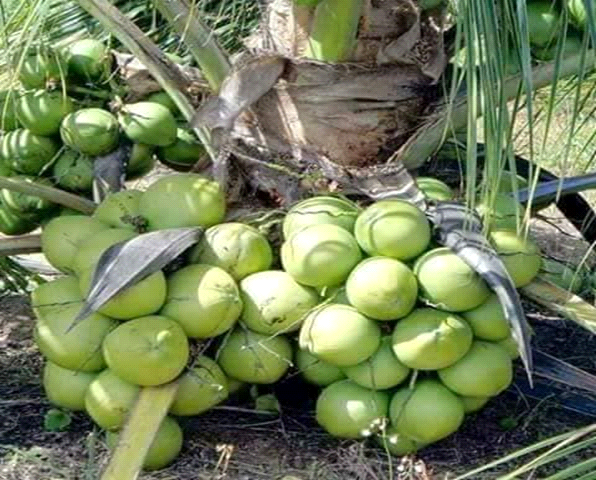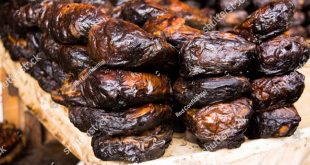Here is a laid down guideline on how to cultivate your coconut plantation in Nigeria so that you ensure maximum productivity of your coconut farm. Below are the requirements you need before you start your coconut plantation business in Nigeria.
1. Coconut Plantation Business Plan
Before starting your coconut plantation, it is highly recommended that you have a well-detailed business plan. With your business plan, you can fully understand all that there is in coconut plantation business in Nigeria. Through the market survey you carried out in your business plan, you will greatly understand the coconut market in Nigeria and how to succeed in it.
Aside from helping you understand the coconut market in Nigeria and other vital things that you really need to know about coconut plantation, your business plan comes in handy in many ways. With your coconut plantation business plan, you can attract investors to your coconut farm in Nigeria. It also gives you an edge while applying for loans from the government or other private financial institutions in Nigeria.
2. Farmland Selection And Preparation
Now that you have your coconut plantation business plan and your startup capital, the next requirement for you is farmland selection and preparation. You should make sure that the farmland you have selected is properly cleared. The compacted soil must be plowed and all stumps in your farm removed to ensure adequate drainage.
It is recommended that you fence your farmland borders, with good access roads, irrigation systems, and other important infrastructure that ensures maximum growth and development of your coconut plantation.
3. The Soil Requirement
Experts say that the ideal soil conditions that guarantee improved growth and performance of your coconut palms are well-drained soil that is between 50-100cm in depth and good water holding capacity. You can also grow your coconut under different soil types like the lateritic, coastal sandy, alluvial, loamy, etc
4. Coconut Planting Season
You should know that coconut palm is largely dependent on the availability of water, so your planting should be carried out at the onset of the rainy season. You are advised to use seedlings grown and nurtured in a nursery for your coconut propagation. Your coconut seedlings should be between 8-10 months old before you transplant them to the permanent coconut plantation farmland.
Once you take your coconut seedlings out of the nursery, it is highly recommended that you transplant them within 3 days in order to avoid the death of your coconut seedlings.
5. Coconut Spacing
For the spacing of your coconut in your coconut plantation, it is recommended that you plant not more than 70 coconut palms in one acre of land in West Africa. A spacing of 7.5 by 7.5 meters will comfortably take in 178 coconut palms in one hectare. You should consider the square system of planting as it is the most preferred.
There are three major coconut planting space patterns that you can select from. You are advised to have all the needed information on the different coconut planting space patterns before you select any of them. These planting space patterns for your coconut plantation include;
· The square pattern
· Triangular pattern, and
· The Single Hedge pattern.
6. Fertilizer Application
For you to ensure optimal growth and development of your coconut seedlings, place the seedlings in the already dug holes backfilling them with topsoil that is mixed with 30g NPK fertilizer. Ensure you handle the seedlings carefully to avoid damaging the sprout. You are highly advised to start irrigation once the planting is over.
As your coconut seedlings grow in your coconut plantation, make sure you backfill soil to the surrounding soil level. According to the Coconut Development Board, a mature coconut palm requires on the average between 600-800 liters of water once in every 4-7 days. It will interest you to know that during the dry season, the death of transplanted coconut seedlings is on a high, there is the shedding of young nuts, the inability of young fronds to open, and the drying and hanging down of older fronds.
You are seriously advised to have a very good irrigation system during this period if you wish to have a bountiful coconut plantation harvest.
7. Coconut Pests And Diseases
You should know that the major pests that attack coconut palms include; Rhinoceros beetle, the coconut eriophyid mite, red palm mite, the red palm weevil, the leaf-eating caterpillar, the scale insect, and the coconut mealybug. There are available pesticides in the market that you can use to control the incidence of these pests in your coconut plantation in Nigeria.
For the diseases of coconut, they include the red ring disease, bud rot, and the lethal yellowing.
8. Harvesting Your Coconut
If you made use of the genetically improved coconut seedlings, you certainly will start harvesting from the fourth year of planting. You harvest the mature nuts immediately you start noticing that at least one of the nuts in the oldest bunch is drying up. Mature nuts are also easy to identify by the brown coloration of their epicarp.
You should know that there are two major methods of harvesting coconut. Though each has its own advantages and disadvantages, these methods are:
· The climbing method, and
· The pole method
9 Coconut Demand And Supply Trends In Nigeria
As stated earlier in this article, there is a high demand for coconut in Nigeria and the world at large. Coconut is a major raw material for industries such as pharmaceuticals, food, beverage, and cosmetics. The coconut market in Nigeria is filled with great opportunity for the cultivation, processing, and sales of coconut.
Coconut is used in the production of fruit drinks in Nigeria like; Chivita, Chi- exotic, etc.
 MMS PLUS NG – Maritime, Aviation, Business, Oil and Gas News Online Newspaper with coverage in Maritime, Oil and Gas, Aviation, Power and Energy as well as Financial News
MMS PLUS NG – Maritime, Aviation, Business, Oil and Gas News Online Newspaper with coverage in Maritime, Oil and Gas, Aviation, Power and Energy as well as Financial News











I want high yielding coconut seedlings to plant in one of the Coastal communities in Bayelsa
Can you please advise on the best breed and how I may get it to site